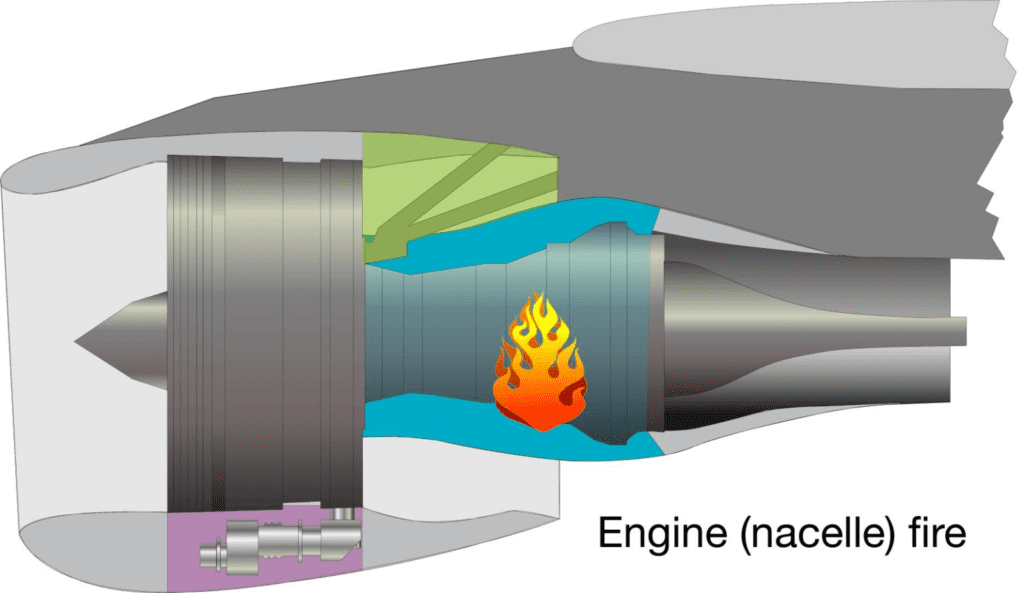
Most large aircraft have loops or firewires lining the APU and engines, which are where fires are most likely to start. A steel tube is used to cover an electrode that has been covered in an insulating substance to form the tubular structure known as firewire. This firewire connects to either the control unit or the computer that detects fire.
What if an engine fire happened while the plane was in the air?
A hazardous situation requiring prompt response from the pilot is an engine fire. Cockpit alerts are sent out if the system detects a fire. This covers both audible and visual alarms. The alarm needs to be cancelled as soon as possible because it might be a huge distraction.
The engines must be turned off in the next phase. In order to accomplish this, the pilots must idle each engine’s thrust lever before cutting off its fuel supply. The extinguishant must next be sprayed after this is finished. But first, it’s crucial to completely cut the engine off from the rest of the aircraft’s systems. Aircraft are equipped with a pull switch or a fire push button for this. When this switch is turned on, the following happens:
- Closes the Low pressure (LP) fuel valve
- Arms the extinguisher squibs
- Closes the hydraulic shutoff valves
- Closes the engine air bleed valve
- Deactivates the engine-driven electrical generator
The engine fire protection is carried out by two systems: the fire detection system and the fire extinguishing system.
The engine Fire Detection Unit (FDU) monitors two engine detector loops. Each loop has detector elements installed in critical engine areas and connected in parallel. Warnings are supplied according to an AND logic (both loops detect a FIRE). There are two fire bottles installed in the engine pylon for engine FIRE extinguishing.
The engine fire protection system gives aural and visual indications in FIRE and FAULT conditions.

CONTROL AND INDICATING
The overhead ENGine FIRE control panel is used for detection and extinguishing functions.
In addition, there a red FIRE indicator light for each engine on the ENG MASTER panel installed on the pedestal.
There is no assurance that launching every bottle will put out the flames. If it doesn’t, the pilots must right away locate a location to land the aircraft. The most hazardous situation a pilot could encounter in the air is an uncontrolled fire because of how unpredictable they can be.
There have been issues in the past when engine fires were not dealt with right away. There have been instances where delayed pilot actions have caused detector loops to burn. The pilots may believe the fire is out after the loops are totally burned, but in actuality, the fire is still raging.





